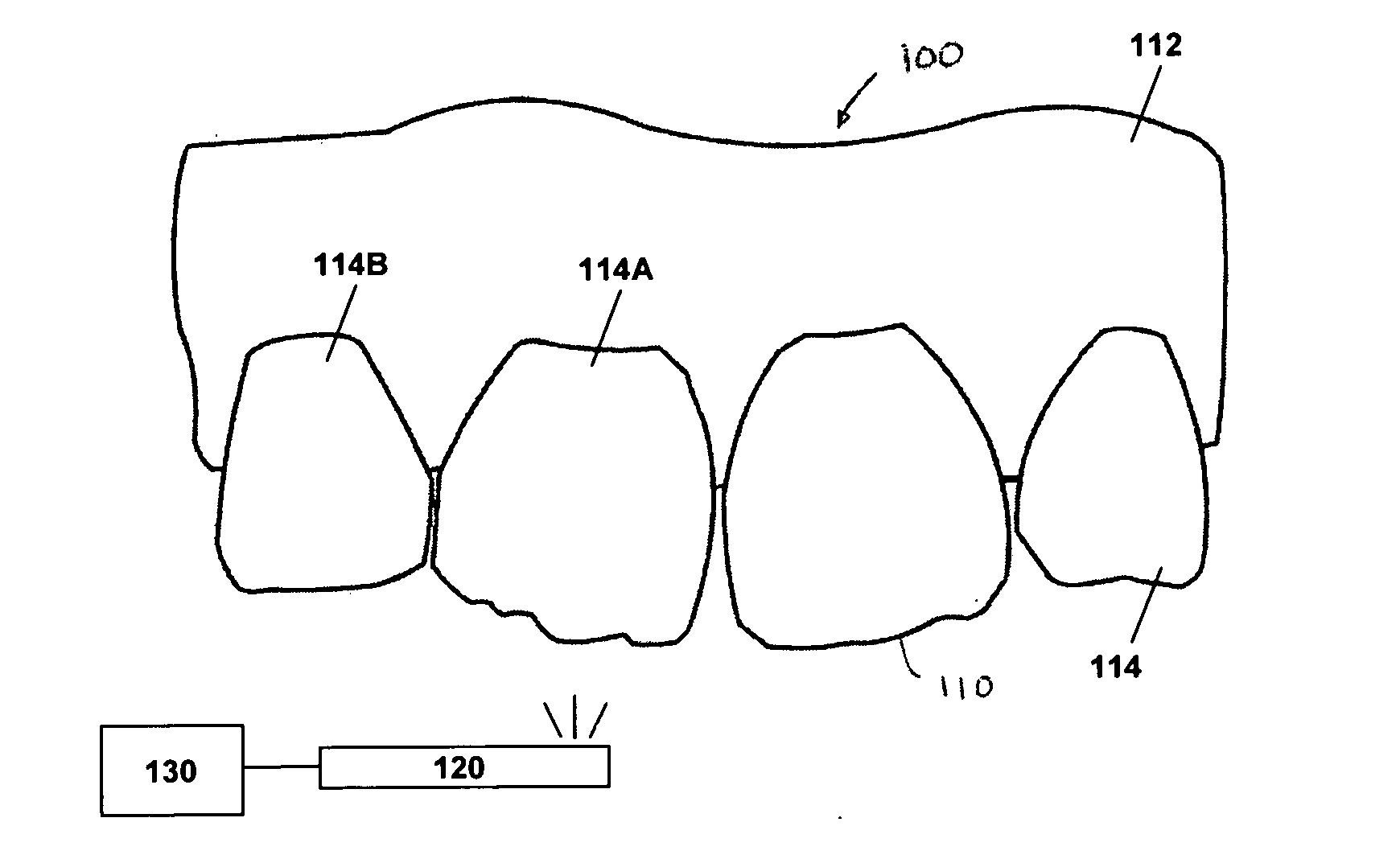Method for dental restoration and related kit
- Summary
- Abstract
- Description
- Claims
- Application Information
AI Technical Summary
Benefits of technology
Problems solved by technology
Method used
Image
Examples
Embodiment Construction
[0044]The present disclosure generally relates to a method for forming a dental mold. The method generally includes: (a) scanning an existing dental structure to generate a three-dimensional first digital model of the existing dental structure, (b) modifying the first digital model of the existing dental structure to generate a three-dimensional second digital model of a planned dental structure; (c) generating a three-dimensional third digital model corresponding to a negative of the second digital model; (d) digitally sectioning the third digital model into at least one buccal model portion and at least one lingual model portion of the third digital model; and (e) creating a dental mold comprising at least one buccal mold portion and at least one lingual mold portion based on the sectioned third digital model.
[0045]In other embodiments, the disclosure also relates to (a) methods of assembling the dental mold over a tooth and a gum of a patient having an existing dental structure i...
PUM
| Property | Measurement | Unit |
|---|---|---|
| Nanoscale particle size | aaaaa | aaaaa |
| Nanoscale particle size | aaaaa | aaaaa |
| Structure | aaaaa | aaaaa |
Abstract
Description
Claims
Application Information
 Login to View More
Login to View More - R&D
- Intellectual Property
- Life Sciences
- Materials
- Tech Scout
- Unparalleled Data Quality
- Higher Quality Content
- 60% Fewer Hallucinations
Browse by: Latest US Patents, China's latest patents, Technical Efficacy Thesaurus, Application Domain, Technology Topic, Popular Technical Reports.
© 2025 PatSnap. All rights reserved.Legal|Privacy policy|Modern Slavery Act Transparency Statement|Sitemap|About US| Contact US: help@patsnap.com



